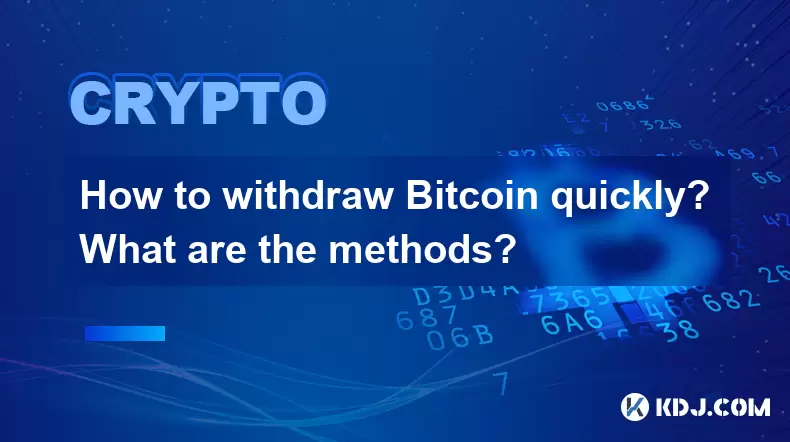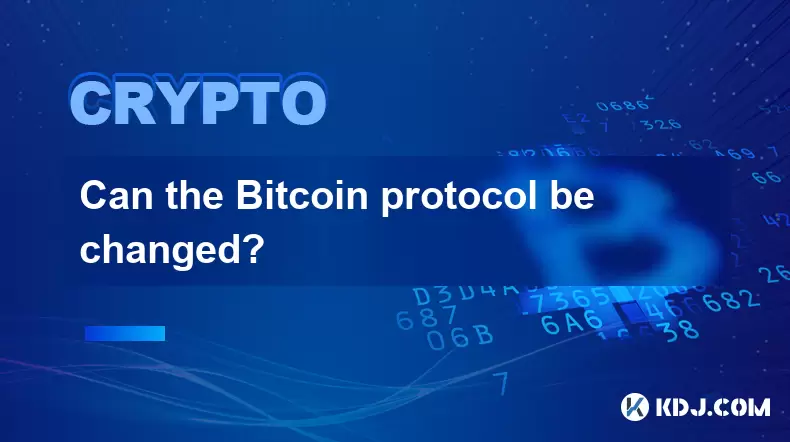-
 Bitcoin
Bitcoin $121700
1.34% -
 Ethereum
Ethereum $4761
1.55% -
 XRP
XRP $3.238
-1.23% -
 Tether USDt
Tether USDt $1.000
0.06% -
 BNB
BNB $866.7
1.65% -
 Solana
Solana $204.4
1.84% -
 USDC
USDC $0.9997
-0.01% -
 Dogecoin
Dogecoin $0.2416
-3.00% -
 Cardano
Cardano $0.9890
13.42% -
 TRON
TRON $0.3687
3.07% -
 Chainlink
Chainlink $23.73
0.28% -
 Hyperliquid
Hyperliquid $46.99
4.27% -
 Stellar
Stellar $0.4468
-1.13% -
 Sui
Sui $3.976
-0.04% -
 Bitcoin Cash
Bitcoin Cash $608.8
0.01% -
 Hedera
Hedera $0.2684
1.42% -
 Ethena USDe
Ethena USDe $1.000
-0.02% -
 Avalanche
Avalanche $25.18
-0.30% -
 Litecoin
Litecoin $128.3
-2.70% -
 Toncoin
Toncoin $3.543
0.96% -
 UNUS SED LEO
UNUS SED LEO $9.277
0.28% -
 Shiba Inu
Shiba Inu $0.00001373
-1.48% -
 Uniswap
Uniswap $11.56
-4.44% -
 Polkadot
Polkadot $4.224
-0.47% -
 OKB
OKB $104.5
0.58% -
 Bitget Token
Bitget Token $4.762
-1.96% -
 Dai
Dai $0.9999
0.01% -
 Cronos
Cronos $0.1641
-2.63% -
 Pepe
Pepe $0.00001195
-3.97% -
 Aave
Aave $326.9
1.00%
How to withdraw Bitcoin quickly? What are the methods?
Withdraw Bitcoin quickly using exchanges, P2P platforms, Bitcoin ATMs, hardware wallets, or mobile wallets, each with its own steps and considerations for speed and security.
May 12, 2025 at 04:43 pm

Withdrawing Bitcoin quickly is a common concern for many cryptocurrency users. Whether you're looking to move your funds to another wallet, convert them to fiat, or simply secure your assets, understanding the fastest methods to withdraw Bitcoin is crucial. In this article, we'll explore various methods to withdraw Bitcoin quickly, detailing the steps involved and the considerations you should keep in mind.
Understanding Bitcoin Withdrawal Basics
Before diving into the specific methods, it's important to understand the basics of Bitcoin withdrawal. Bitcoin withdrawal refers to the process of transferring your Bitcoin from one wallet or platform to another. This can be done for various reasons, such as moving funds to a more secure wallet, converting to another cryptocurrency, or cashing out to fiat currency. The speed of withdrawal can be influenced by several factors, including the platform's processing time, network congestion, and the fees you're willing to pay.
Method 1: Using a Cryptocurrency Exchange
One of the most common ways to withdraw Bitcoin quickly is through a cryptocurrency exchange. Exchanges like Binance, Coinbase, and Kraken offer robust platforms for trading and withdrawing Bitcoin. Here's how you can withdraw Bitcoin from an exchange:
- Log into your exchange account: Ensure you have a verified account on the exchange.
- Navigate to the withdrawal section: This is usually found under the "Wallet" or "Funds" section.
- Select Bitcoin (BTC): Choose Bitcoin from the list of available cryptocurrencies.
- Enter the withdrawal address: This is the address of the wallet where you want to send your Bitcoin. Double-check the address to avoid errors.
- Specify the amount: Enter the amount of Bitcoin you wish to withdraw.
- Set the transaction fee: Higher fees can result in faster transaction times. Choose a fee that balances speed and cost.
- Confirm the withdrawal: Review all details and confirm the transaction.
Exchanges typically process withdrawals quickly, but the actual time it takes for the Bitcoin to reach your wallet can vary based on network congestion and the fee you've set.
Method 2: Using a Peer-to-Peer (P2P) Platform
Another method to withdraw Bitcoin quickly is through a peer-to-peer (P2P) platform. P2P platforms like LocalBitcoins and Paxful allow you to trade directly with other users, which can sometimes result in faster withdrawals. Here's how to use a P2P platform for quick Bitcoin withdrawals:
- Create an account on the P2P platform: Sign up and complete any necessary verification.
- Browse available offers: Look for sellers offering Bitcoin at a price and payment method that suits you.
- Select a seller: Choose a seller with good ratings and a history of successful trades.
- Initiate the trade: Follow the platform's instructions to send payment to the seller.
- Confirm receipt of Bitcoin: Once the seller releases the Bitcoin, it will be transferred to your wallet on the platform.
- Withdraw to your personal wallet: From the platform's wallet, you can then withdraw the Bitcoin to your personal wallet.
P2P platforms can offer faster withdrawals because they bypass the need for centralized processing, but be cautious of scams and ensure you're dealing with reputable sellers.
Method 3: Using a Bitcoin ATM
Bitcoin ATMs provide another quick way to withdraw Bitcoin, especially if you need to convert it to cash immediately. Here's how to use a Bitcoin ATM for withdrawal:
- Locate a Bitcoin ATM: Use a service like Coin ATM Radar to find a Bitcoin ATM near you.
- Prepare your wallet: Have your Bitcoin wallet address ready, either on your phone or a piece of paper.
- Insert cash: Follow the ATM's instructions to insert the amount of cash you want to convert to Bitcoin.
- Enter your wallet address: Input your Bitcoin wallet address where you want the Bitcoin to be sent.
- Confirm the transaction: Review the details and confirm the transaction.
Bitcoin ATMs can process transactions quickly, but be aware that they often charge higher fees than other methods.
Method 4: Using a Hardware Wallet
For those who prioritize security, using a hardware wallet like Ledger or Trezor can be a good option for quick Bitcoin withdrawals. Here's how to withdraw Bitcoin using a hardware wallet:
- Connect your hardware wallet: Plug your hardware wallet into your computer or mobile device.
- Open the wallet software: Use the software provided by the hardware wallet manufacturer to access your wallet.
- Select the Bitcoin wallet: Navigate to your Bitcoin wallet within the software.
- Enter the recipient address: Input the address where you want to send your Bitcoin.
- Specify the amount: Enter the amount of Bitcoin you wish to withdraw.
- Set the transaction fee: Choose a fee that balances speed and cost.
- Confirm the transaction: Use the hardware wallet to confirm the transaction.
Hardware wallets offer quick and secure withdrawals, but the speed can still be affected by network congestion and the fees you set.
Method 5: Using a Mobile Wallet
Mobile wallets like Trust Wallet and BRD offer a convenient way to withdraw Bitcoin quickly from your mobile device. Here's how to use a mobile wallet for Bitcoin withdrawal:
- Download and install the mobile wallet: Choose a reputable mobile wallet and install it on your device.
- Set up your wallet: Follow the app's instructions to create a new wallet or import an existing one.
- Navigate to the send section: This is usually found under the "Send" or "Transfer" tab.
- Enter the recipient address: Input the address where you want to send your Bitcoin.
- Specify the amount: Enter the amount of Bitcoin you wish to withdraw.
- Set the transaction fee: Choose a fee that balances speed and cost.
- Confirm the transaction: Review all details and confirm the transaction.
Mobile wallets can process withdrawals quickly, but the speed can still be affected by network congestion and the fees you set.
Frequently Asked Questions
Q: Can I withdraw Bitcoin to a bank account directly?
A: No, you cannot withdraw Bitcoin directly to a bank account. You must first convert your Bitcoin to fiat currency on an exchange or through a P2P platform, then withdraw the fiat to your bank account.
Q: How long does it typically take to withdraw Bitcoin?
A: The time it takes to withdraw Bitcoin can vary from a few minutes to several hours, depending on the method used, the fees set, and the current network congestion.
Q: Are there any risks associated with quick Bitcoin withdrawals?
A: Yes, there are risks such as high fees, potential scams on P2P platforms, and the risk of sending Bitcoin to the wrong address. Always double-check the recipient address and be cautious of the fees you're paying.
Q: Can I withdraw Bitcoin without paying high fees?
A: It's possible to withdraw Bitcoin with lower fees, but this may result in slower transaction times. You can choose lower fees on exchanges and wallets, but be prepared for potential delays.
Disclaimer:info@kdj.com
The information provided is not trading advice. kdj.com does not assume any responsibility for any investments made based on the information provided in this article. Cryptocurrencies are highly volatile and it is highly recommended that you invest with caution after thorough research!
If you believe that the content used on this website infringes your copyright, please contact us immediately (info@kdj.com) and we will delete it promptly.
- Kazakhstan's Crypto Leap: Bitcoin ETF and Central Asia's Digital Finance Future
- 2025-08-13 12:45:19
- BlockDAG Presale Blazes Past $371M: Fundraising Frenzy Fuels Crypto Sensation
- 2025-08-13 13:05:21
- Meme Coins: Chasing the 2025 Surge – Which Will Moonshot?
- 2025-08-13 10:25:23
- Bitcoin's Wild Ride: Rally, Pullback, and What's Next
- 2025-08-13 10:25:23
- Bitcoin, Bitmax, and Institutional Demand: A New Era of Crypto Investment
- 2025-08-13 10:45:12
- Solana, ROAM, and Airdrops: What's the Buzz in 2025?
- 2025-08-13 11:35:13
Related knowledge

Why is Bitcoin considered a revolutionary technology?
Aug 12,2025 at 08:29pm
Decentralization and the Elimination of Central AuthoritiesThe core innovation behind Bitcoin lies in its decentralized architecture, which fundamenta...

Why is Bitcoin considered a revolutionary technology?
Aug 10,2025 at 07:42pm
Decentralized Architecture and Trustless TransactionsBitcoin is considered revolutionary because it introduced a decentralized architecture that opera...

What are the key features of Bitcoin?
Aug 10,2025 at 02:50am
Decentralization and Peer-to-Peer NetworkOne of the most defining characteristics of Bitcoin is its decentralized nature. Unlike traditional financial...

Can the Bitcoin protocol be changed?
Aug 07,2025 at 01:16pm
Understanding the Bitcoin ProtocolThe Bitcoin protocol is the foundational set of rules that govern how the Bitcoin network operates. It defines every...

Can the Bitcoin protocol be changed?
Aug 11,2025 at 01:01am
Understanding the Bitcoin Protocol StructureThe Bitcoin protocol is the foundational set of rules that govern how the Bitcoin network operates. These ...

What happens to Bitcoin transactions once they are confirmed?
Aug 09,2025 at 05:22am
Understanding Bitcoin Transaction ConfirmationWhen a Bitcoin transaction is initiated, it is broadcast to the network and placed in a pool of unconfir...

Why is Bitcoin considered a revolutionary technology?
Aug 12,2025 at 08:29pm
Decentralization and the Elimination of Central AuthoritiesThe core innovation behind Bitcoin lies in its decentralized architecture, which fundamenta...

Why is Bitcoin considered a revolutionary technology?
Aug 10,2025 at 07:42pm
Decentralized Architecture and Trustless TransactionsBitcoin is considered revolutionary because it introduced a decentralized architecture that opera...

What are the key features of Bitcoin?
Aug 10,2025 at 02:50am
Decentralization and Peer-to-Peer NetworkOne of the most defining characteristics of Bitcoin is its decentralized nature. Unlike traditional financial...

Can the Bitcoin protocol be changed?
Aug 07,2025 at 01:16pm
Understanding the Bitcoin ProtocolThe Bitcoin protocol is the foundational set of rules that govern how the Bitcoin network operates. It defines every...

Can the Bitcoin protocol be changed?
Aug 11,2025 at 01:01am
Understanding the Bitcoin Protocol StructureThe Bitcoin protocol is the foundational set of rules that govern how the Bitcoin network operates. These ...

What happens to Bitcoin transactions once they are confirmed?
Aug 09,2025 at 05:22am
Understanding Bitcoin Transaction ConfirmationWhen a Bitcoin transaction is initiated, it is broadcast to the network and placed in a pool of unconfir...
See all articles

























































































